Belgium invented Praline in 1912 and soon became known for making the best chocolates in the world. But over a decade later, the supremacy of local Belgian chocolatiers is under threat from international competition. But that does not change the fact that Belgium is and will remain to be the Home of Chocolate.

The first trace of chocolate in Belgium dates back to 1635 when there are records of a purchase by the Abbot of Baudeloo in Ghent. In the 19th century, Belgians would ship cocoa over, all the way from Congo which was their new African colony. However, the country’s reputation for producing chocolate really began in 1912 with the invention of the Praline. A Praline is a chocolate shell with a soft centre, (not the crispy nutty confectionery of the same name). Praline was invented by Jean Neuhas who went on to become a world famous chocolatier, founding a business with more than 2000 sales outlets in 50 countries. Belgian pralines are hand made and the flavors are created by adjusting the amount of sugar and cocoa in the chocolate mixture. More than 172,000 tons of chocolate is produced per year in Belgium and there are more than 2000 chocolate shops within its borders, that together make up an area about the size of the state of Maryland in the United States. Nehaus is one fo the most famous brands of Belgian chocolates along with Callebaut, Cote d’Or and Leonidas.
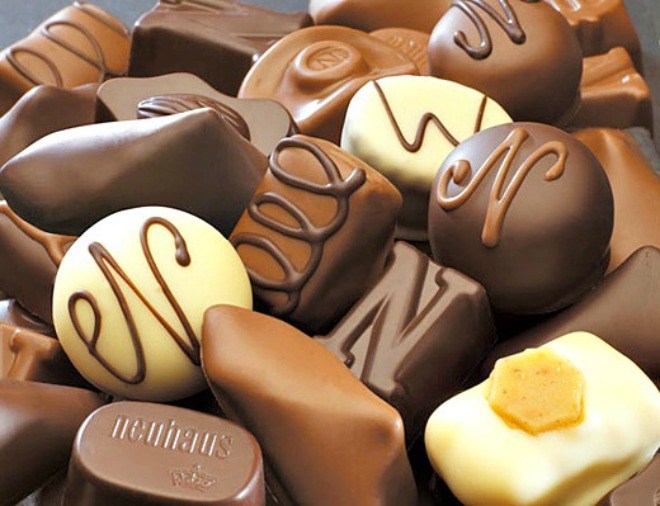
French chocolate is typically darker, less sweet and has more subtle flavors going on. Switzerland has its own signature chocolate, which is milk chocolate. Belgium on the other hand, has taken all of these influences and also developed its own unique chocolate making technique and made chocolate making into an artisan industry. Belgian chocolate is governed by strict rules – any chocolate labelled as Belgian has to be made within the country only. Belgium exports about 2 billion Euros worth of chocolate, according to CAOBISO, an association representing chocolate, biscuit and confectionery industries of Europe. As per the statistics, only Germany sells more chocolate abroad than Belgium.
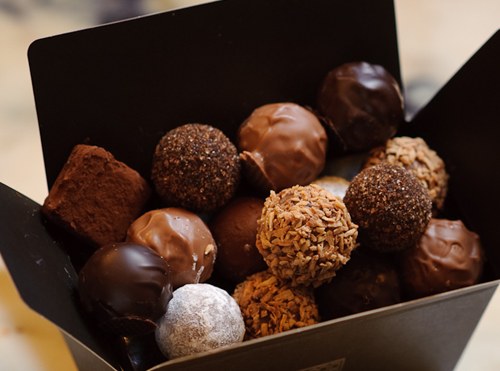
Back in the 17th century when Belgium was still ruled by the Spanish, explorers brought cocoa beans from South America and introduced them to the Belgian community. At the time, chocolate was a sign of luxury and was mostly used to make ‘hot chocolate’ for nobility and to impress new visitors. In fact, Henri Escher, the major of Zurich, was served a cup of this delicious drink when visiting the Grand Palace of Brussels in 1697. He immediately fell in love with the drink, took the recipe home with him, and introduced his own country to chocolate. Switzerland today is one of the biggest competitors for Belgium in the chocolate market.

The first time Belgium truly delved into the chocolate market was when they colonized the Congo and found a large surplus of Cocoa beans. King Leopold III then made Belgium the number one trader in cocoa and chocolate.

Jean Neuhaus (ironically, from Switzerland), as mentioned earlier, put Belgium on the world chocolate map. In 1857, he moved into a pharmacy-cum-sweet shop in the Galérie de la Reine in Brussels, where he sold plaques of dark chocolate. Gradually, the apothecary transformed into a real sweet shop, and the first praline was created in 1912. the hollow chocolate shell with a sweet filling was invented by Jean’s grandson, also named Jean, who also invented the Ballotin, the box in which pralines were wrapped. The Jean Neuhaus store still exists in Brussels and is deemed as a must visit place in the city.

To understand why Belgian chocolates are so famous and deliciously addictive, it is important to know exactly how they are made. the secret to their success lies in the ingredients used to make them, and in the production process. A law created in 1884 states that a minimum level of 35% cocoa must be used, in order to prevent usage of low quality fat sources or other ‘hacks’ to modify the composition. Production starts in the early stages, which includes overseeing how the cocoa beans are planted, the way they are roasted and which beans are used. Since 2003, European Union legislation has allowed the use of up to 5% vegetable fat, other than cocoa butter (like palm oil) in chocolates. But this added ingredient is considered as tantamount to loss of quality, so chocolate manufacturers in Belgium continue to use 100% cocoa butter.

There are several laws and unspoken rules in the chocolate making community, where traditional manufacturing is still preferred. This explains why there are so many independent chocolatiers throughout Belgium. However, even big chocolatiers like Neuhaus have managed to expand outside Belgium, but still continue to use only traditional recipes, some of which are still top secret.

If you are in Belgium and want to learn about the chocolate making process in more detail, it is worth visiting the MUCC (the Museum of Cocoa and Chocolate), located near the Grand Place in Brussels’ Main Market Square.
Belgium is not only a major produced of chocolate but also one of the biggest consumers of chocolate in the world with an average consumption of 6kg per person per year. One other secret of the success of small chocolatiers in Belgium is that they make it in small batches so it doesn’t have to stored. Storage is generally the stage when the chocolate begins losing its flavor.
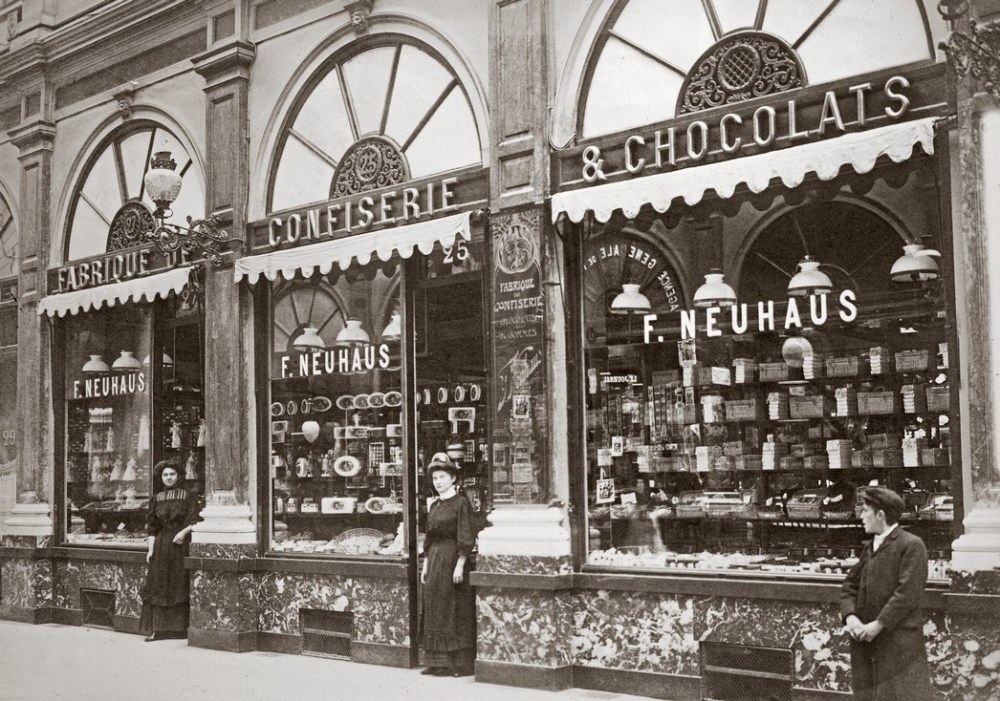
Belgium also has the world’s biggest chocolate factory at Wieze in East Flanders. Brussels Airport is said to retail the most chocolate of any airport in the world. the country also supplies 20% of the world’s industrial chocolate. There’s even a chocolate academy in Wieze, opened in 2014 by Callebaut, the renowned chocolatier, on the same spot where it started producing its first chocolate over 100 years ago. it offers pastry, confectionery, bakery and culinary workshops. Callebaut is the largest importer of cocoa nibs and processes most of the beans into untempered chocolate for distribution in Belgium. Untempered chocolate dries slowly, does not harden fully and has a dull blotchy finish. In contrast, tempered chocolate hardens to a glossy and firm finish.
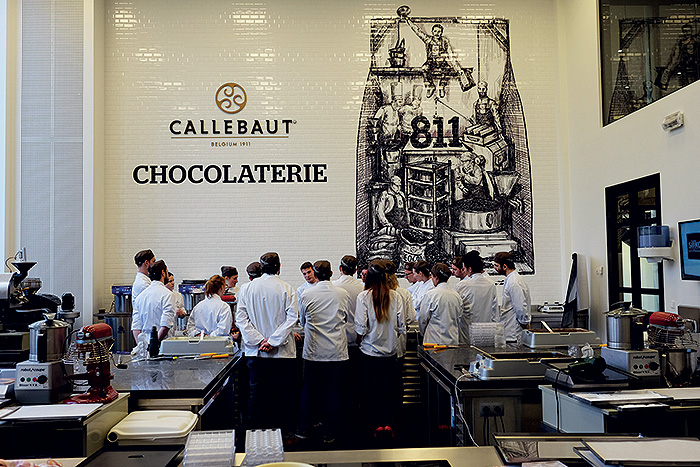
The best known commercial brand of Belgian chocolate is Côte d’Or, which you can find in almost any grocery store in Belgium and in many other places around the world. Côte d’Or was found in 1870 by Charles Neuhaus, who opened a factory shortly after that. The name refers to the Golden Coast, now Ghana in Africa, where the cocoa beans first originated from. the brand is now a part of the American Mondelez International. Commercial brands such as Neuhaus are renowned for making delicious chocolates, and their regular chocolate bars, pralines and truffles are definitely a must try when visiting Belgium — but the products of local, independent chocolatiers are certainly worth sampling as well!
Belgium also refuses to rest on its chocolate covered laurels and continues working on it at Cacaolab, a spin off of Ghent University and a unique small-scale experimental chocolate and fillings production facility. The researchers at this lab probe the science of chocolate making, with the potential to dramatically improve quality and shelf life. they partner with the industry to create innovative chocolate products and stimulate the export potential of Belgian chocolate.
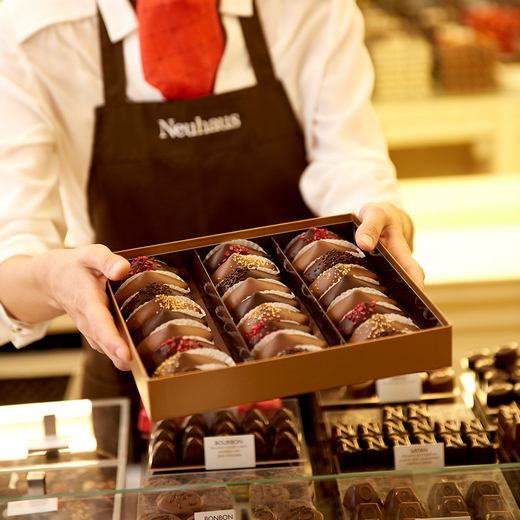
With all this, is there any wonder that Belgium is the self-proclaimed ‘Chocolate Capital of the World’!!!
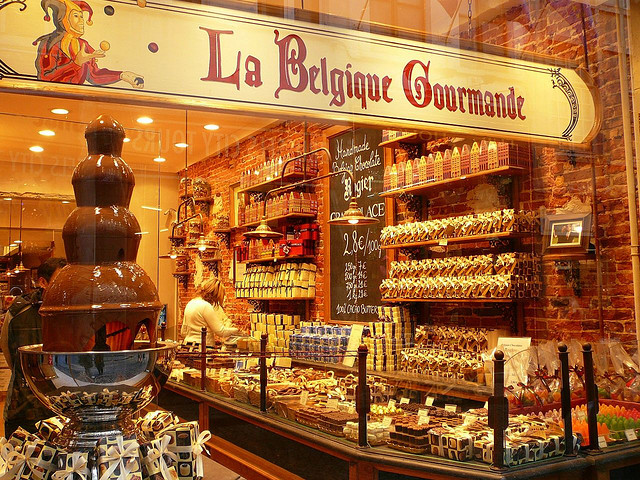

wow! exciting read. so many new facts to read in your post. Great!
LikeLiked by 1 person
Thanks much!
LikeLike
😊
LikeLiked by 1 person
Excellent post. Full of great information – learned lots. My favourite is chocolate with orange filling!!
LikeLiked by 1 person
I love Belgian chocolate! I first developed a taste for it about 25 years ago when I was working in brussels – and I’ve never gone back. Fascinating to hear more of the history!
LikeLike
Wow Bhavi…..those chocolates and the entire post is just finger licking delicious…..nice reading your very detailed writing on Belgian chocolates……:)
LikeLiked by 1 person
It’s only breakfast time and all I want is to eat chocolate now!
LikeLiked by 1 person
I love chocolate and I loved reading this very interesting history!
LikeLiked by 1 person
Really interesting post. I visited Belgium on a school trip where we went through France and Belgium to visit the trenches. We went in a couple of chocolate shops and they were amazing. I was massively in awe.
LikeLiked by 1 person
. I visited Belgium on a school trip where we went through France and Belgium to visit the trenches. We went in a couple of chocolate shops and they were amazing. I was massively in awe.
LikeLiked by 1 person
Lovely post, well researched, and well written. It’s just now I’m sitting here with cravings!
LikeLiked by 1 person
Chocolate in Belgium was just so better thsn any other I have ever had. This is huge for me!
We owe a lot to the Belgians. 🍩🍮🍫🍰
LikeLiked by 1 person
That was fascinating. I loved learning the history behind it all. I would seriously give my left arm for some chocolate now, but only the good stuff. I’m not giving a limb for a simple hershey bar.
LikeLike
Now I know why I love Belgium chocolate! Fabulous idea to run the history of it too. I have provenance with the butcher I use and his supply of meat, same with where I source vegetables and now I can add chocolate to that list 🙂
Like many things, you don’t; appreciate how bad most of it (any food) is until you try the proper prepared and sourced ones. I found exactly the same with chocolate; good stuff really stands heads and shoulders above everyday rubbish!
LikeLike
My husband and I used to own a chocolate shop here in the states. We started all of our candies with Callebaut Belgium chocolate. It was such a surprise for people who were used to the overly sweet chocolates of Hersey. One day we’ll visit Belgium to taste the chocolate in its home country. Yum.
LikeLiked by 1 person
The things you never knew you needed to know… what a fantastic post! I’ll be using this new knowledge at the next dinner party…
LikeLiked by 1 person
So many pictures of chocolate! I am craving some now 😀 I love Belgian dark chocolate the most!
LikeLiked by 1 person
Drooling now and craving chocolate 🍫
Very interesting information
LikeLiked by 1 person
Wow have never read a post which makes me salivate and dribble. Great post
LikeLiked by 1 person
I’m still nibbling on my Belgium chocolates from a trip there last summer. Thanks for the history lesson!
LikeLiked by 1 person
I’ve had many types of chocolates, but Lindt stands out for me. I am sure the Belgium ones are no less either!
LikeLiked by 1 person
To be honest, I read this just to look at the pictures because, well, chocolate! I had no idea about many of things you mentioned in the post – so interesting.
LikeLiked by 1 person
M so glad you liked it
LikeLike
I worked for years for Bernard Callebaut, a Canadian relative of the Belgium family. But I will say, I have never met a chocolate that I didn’t like 🙂 Great info here. I enjoyed this post very much.
LikeLiked by 1 person
Only the best will do, still love Cote d Or Mignonnettes. Wish I can get hold of some of it. ♥
LikeLiked by 1 person
Love Belgian chocolate. Visited many little shops while visiting.
LikeLiked by 1 person
Reblogged this on blackbeautyandme.
LikeLike